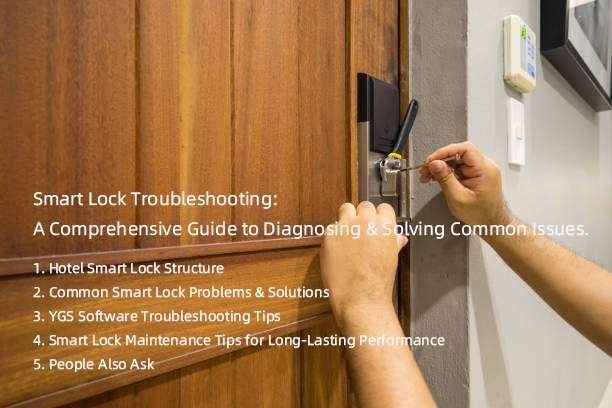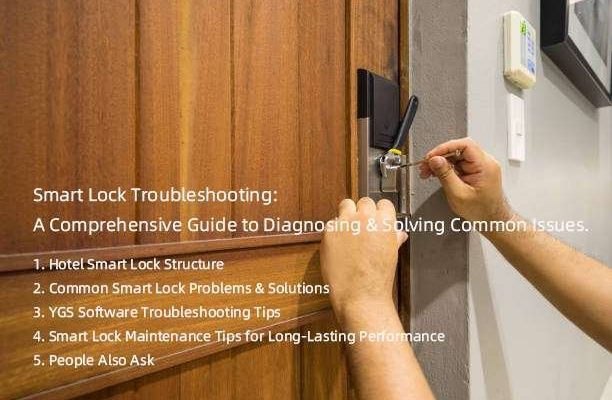
Here’s the thing: *Overheating* isn’t normal for any smart lock—no matter the brand or how fancy it looks on your door. You might walk past your front door and notice it’s unusually warm by touch, or maybe you get a warning from the app. Either way, you’re probably wondering: Is this a glitch, a dying battery, or a bigger electrical problem? Don’t worry—I’ll walk you through what causes a smart lock to overheat, how to spot the exact culprit, and what steps to take so you can trust your lock again.
Why Is My Smart Lock Getting Hot?
If you’ve ever grabbed your smart lock and thought, “Why does this thing feel like it’s been sitting on a grill?”—you’re not alone. Most of the time, smart locks like those from August or Yale stay pretty cool during use. A little warmth is fine, but if it’s truly hot, that’s a red flag.
What actually causes a smart lock to overheat? There are a few common culprits. The *battery* is the biggest one—sometimes, if the batteries are old, cheap, or installed wrong, they can overheat from working too hard. Next, there’s the motor. If your deadbolt is sticking, or the door isn’t quite aligned, the lock might run its motor for too long, and that can drive up the temperature. Lastly, there could be a *short circuit*—something’s off inside the electronics, making them work overtime or misfire.
Honestly, electronics are a bit like people: too much stress and things get heated, literally. Some locks will give a notification in the app (like August’s overheating warning), but for most brands, you’ll have to rely on your senses—touch and smell. If the lock’s warm and you notice a faint burning smell, it’s time to pay attention.
You might be wondering if sunlight could be the issue. While direct sun can warm the outside, most indoor lock components stay protected. If the interior unit (where the electronics and batteries are) is hot—especially if it’s not in the sun—you’re likely facing a mechanical or electrical issue, not just a warm day.
Checking the Batteries: Are They the Problem?
Let me explain: batteries are the backbone of most smart locks. Whether it’s standard AA batteries in a Yale Assure, or the lithium-ion packs in a Nest x Yale, if something’s wrong, your lock can heat up fast. You should always start your diagnosis here.
- Remove the batteries: Open the battery compartment on the interior side of the lock (usually slides or clicks off). If the batteries feel warm or hot, set them aside and let them cool—don’t throw them in the trash, as they could leak or rupture.
- Check for battery leaks: Look for any signs of corrosion, rust, or white powder in the battery compartment. That’s a giveaway something’s gone wrong.
- Test with fresh batteries: Replace the old batteries with brand-new, *name-brand* ones. Avoid cheap batteries; they can cause overheating and power dips.
After you swap in new batteries, give the lock a test. If it stays cool and works normally, you might have caught the issue early. If it still gets hot, or if you keep smelling something weird, move on—batteries were just step one.
A quick note: Never use rechargeable AA or AAA batteries in smart locks unless the brand specifically recommends it. Most smart locks are picky, and off-brand batteries can create low-voltage issues, making motors overheat or lock codes fail unpredictably.
Is the Motor Stuck or Overworking?
Here’s where a little “lock troubleshooting” comes in handy. Smart locks need their mechanical parts to move smoothly. If you’ve noticed your lock struggling—maybe it takes a bit longer to engage, makes grinding noises, or the deadbolt sticks—that’s more than a minor annoyance. It could be the root cause of the overheating.
Test the deadbolt manually: With the cover off, try turning the deadbolt by hand. Does it move freely, or is it sticking? If it’s tight, the motor might be forced to work harder (and longer), which can heat up the electronics and battery compartment.
- Check door alignment: If your door has sagged or shifted even slightly, that can put extra pressure on the lock. Open and close the door a few times, and see if the deadbolt lines up perfectly with the strike plate.
- Lubricate if needed: If the lock’s sticky, a quick squirt of graphite spray or silicone lubricant (never WD-40) inside the latch can make a big difference.
- Listen for warning sounds: Clicking, grinding, or whirring after you enter your lock code or pair the remote is a sign the motor is struggling.
If you’ve addressed alignment and lubrication, and the lock is still hot after unlocking or locking, it’s time to look deeper—there may be an internal fault, not just a stuck bolt.
Could It Be an Electrical or Circuit Problem?
You might be thinking, “But what if it’s not the battery or motor—could something inside be shorting out?” Great question. Circuit issues or firmware bugs can absolutely lead to overheating. Some smart locks (like the Yale Assure or Schlage Encode) have mini circuit boards that handle everything from code entry to syncing with your phone or remote.
If the lock started overheating after you updated the software, paired a new remote, or did a factory reset, it’s possible there’s a glitch in how the lock controls power. Sometimes, a bug can make the lock’s Wi-Fi or Bluetooth module keep running at full blast, generating heat.
Signs of electrical issues:
- Lock feels hot even when not in use
- Random beeping, flashing, or cycling through codes without being touched
- Lock won’t sync with your app or loses its pairing often
- Batteries draining much faster than usual
If you’re comfortable, remove the cover and look at the circuit board. Any burnt spots, melted plastic, or “chemical” smells are a dead giveaway. If you see anything suspect, stop using the lock right away. This is a situation for customer support or a pro, not a DIY fix.
Resetting and Updating Your Smart Lock Safely
Sometimes, a smart lock just needs a digital “refresh.” Bugs or syncing errors can cause the internals to run non-stop, which heats things up. Performing a simple reset or firmware update can sometimes stop the overheating—especially with brands like August or Schlage that rely on software for remote pairing and code management.
To reset your smart lock:
- Remove the batteries to power cycle the lock for 30–60 seconds.
- Reinstall batteries, then follow your manufacturer’s instructions to perform a full reset. This usually means holding a specific button, entering a code, or using the lock’s app.
- Reconnect the lock to your Wi-Fi or Bluetooth via the app, and resync any remotes.
- Check the brand website for the latest firmware and update if needed.
Here’s a tip: Don’t skip the update step. Some brands push out critical fixes when widespread heating or battery issues are discovered. If you miss an update, you might keep running into the same problem—even after a reset.
If after resetting and updating, the lock still gets hot *with fresh batteries* and normal use, you’re likely dealing with a hardware defect.
When to Call for Professional Help
Let’s be real—not all smart lock problems are a DIY fix, especially if overheating keeps coming back. Sometimes the internal wiring, circuit board, or even the lock’s Wi-Fi/Bluetooth chip is fried. Using a lock that’s regularly hot is a safety risk. A worst-case scenario? Damaged electronics could cause the lock to fail or, in rare cases, turn into a fire hazard.
Here’s when you should stop and call for help:
- Any sign of melting, smoke, or a strong burning smell
- The lock is hot even after you’ve changed batteries and reset it
- Visible corrosion or swelling inside the lock’s electronics
- Overheating started after a power surge, lightning strike, or water damage
Contact the manufacturer’s customer support. Most brands, like Yale, August, and Schlage, offer troubleshooting by phone or chat, and some will send a replacement if your lock is still under warranty. If it’s out of warranty, it’s best to hire a licensed locksmith who handles electronic locks—they can inspect for underlying door or wiring issues the brand might miss.
If you ever feel unsure—don’t risk it. A smart lock that’s hot to the touch is always worth checking with an expert.
How to Prevent Smart Lock Overheating in the Future
No one wants the stress of a lock that could turn into a mini space heater. Thankfully, there are a few simple habits to keep your smart lock healthy and cool.
- Use quality batteries: Stick to name-brand batteries and change them as soon as your app warns you (or every 6–12 months, just to be safe).
- Keep the deadbolt and door aligned: Tighten hinge screws and check the strike plate if your door ever starts to sag or drag.
- Avoid direct sunlight when possible: If your door faces the sun, try a shield or overhang to keep the exterior cool (though most overheating starts inside).
- Update software regularly: Set reminders to check your lock’s app for updates, especially if you rely on remote unlocking, custom codes, or paired remotes.
- Check for firmware recalls: Sign up for email updates from your brand to catch any known sync, code, or overheating issues early.
Take a brief moment to physically test your lock monthly—if it’s ever warm without reason, give it a closer look right away.
Considering a Different Smart Lock or Upgrading?
If you keep running into overheating issues—even after exploring all the troubleshooting steps—it might be time to think about a new lock. Some older or off-brand models just aren’t as reliable. Today’s models from Schlage, Yale, or August have better battery management and codes that prevent overuse of the motor or wireless features.
Universal smart locks can also be a smart move if you want something that pairs with different remotes or home automation systems (like Alexa or Google Home). Just make sure any new lock is compatible with your door and Wi-Fi, and always look for reviews mentioning long battery life and good temperature management.
Honestly, investing in a higher-quality smart lock might save you a lot of frustration and worry down the road—especially if this one keeps acting up.
Wrapping Up: Trusting Your Smart Lock Again
Dealing with a smart lock that’s overheating can feel a bit like finding your fridge running hot—you know it’s not right, but it’s not always obvious where to start. Most of the time, it’s something simple: a bad battery, a sticky deadbolt, or a software glitch. Take it slow, test each part, and don’t ignore the warning signs.
If you’ve tried swapping batteries, checking alignment, and resetting the lock and it’s still heating up, don’t push your luck—get in touch with support or a locksmith. Peace of mind at your front door is worth it. Stay safe, and may your smart lock stay cool and reliable!
